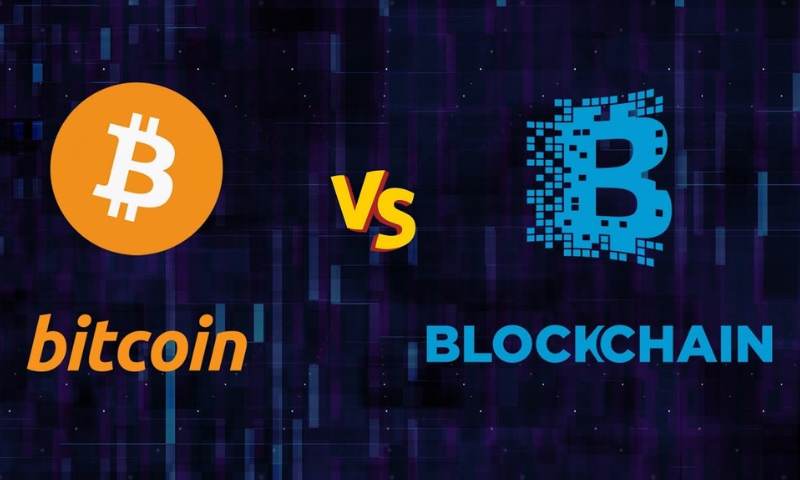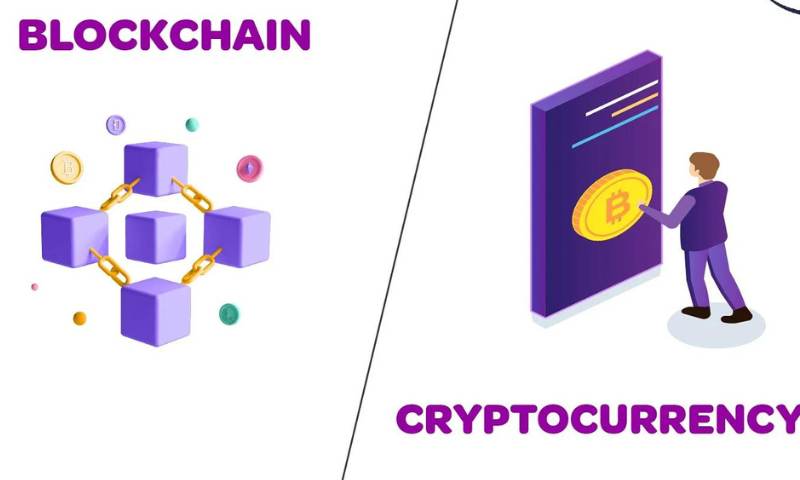Ever felt tangled in tech talks about Explanation of the difference between cryptocurrency and blockchain? Let’s fix that. Think of blockchain as a smart notebook that keeps all notes safe and shared. Now, imagine cryptocurrency as cool cash you create and trade using pages from that notebook. Simply put, blockchain is the stage, and cryptocurrency is the star performer. I’ll guide you through the backstage secrets and show you how each plays their part. So, hold tight, as we clear the fog on these digital wonders and dive into the nuts and bolts of this tech marvel.
The Core Concepts: Blockchain vs Cryptocurrency
Defining Blockchain Mechanics
Think of blockchain as a super-smart notebook. This notebook keeps everyone’s notes the same, without a boss. It’s a list of records, we call “blocks,” chained together. They contain info about every step of a digital handshake, making sure everyone agrees. Blockchain is everywhere — in banks, games, even voting systems! It uses something called “distributed ledger technology.” This means copies of the notebook exist across many computers, not just one. This makes cheating hard. If someone tried to cheat, the other notebooks wouldn’t match, and the cheat would get caught!
Distinguishing Cryptocurrency as a Blockchain Application
Now, let’s talk about cryptocurrency. You’ve likely heard of types like Bitcoin or altcoins, right? These are like special keys used in our massive digital world. These keys — or “crypto assets” — let you trade or buy stuff without using real coins or paper money. A key point here is that cryptocurrency uses blockchain to work. It’s one of many blockchain applications. But it’s not all blockchain does! There are things like smart contracts, which are like digital promises that can’t be broken. There are also public and private blockchains. They let different groups keep their notes safe in different ways.
Understanding how does cryptocurrency work is fun. You do not need a bank to send Bitcoin across the world. It all happens on the blockchain network. This network uses math puzzles, we call ’em “hash functions,” to lock the info in each block. The cool part is decentralization in crypto. This means no single person or place is in charge. Everyone helps to keep the system running and secure!
Crypto transactions are like telling the network, “Hey, I want to give my friend some Bitcoin.” The network then makes sure everyone’s notebooks agree that you can. Once they do, your friend gets their Bitcoin. Those notebooks — they have your back!
And for storing all your digital currency? That’s where crypto wallets come in handy. They’re like your personal sections of the massive notebook, keeping your keys safe. Some people are serious about crypto investment. They buy and hope the value goes up, just like with stocks.
So, when folks say “cryptocurrency vs blockchain technology,” remember this: cryptocurrency is just one thing you can do with blockchain. There are also games, art, and ways to prove who you are online. Even sending a secret note that only one person can read — that’s encryption and blockchain working together. Crypto economics talks about the money side of this world. Mining cryptocurrency is how new keys are made. This is where computers solve tough problems to unlock new blocks, kinda like digging for treasure.
Always keep in mind — the buzz around Bitcoin and blockchain, it’s not just hype. It makes sure things are fair, without needing a middleman. This is huge for business, health, and even keeping secrets safe. Blockchain without cryptocurrency is still powerful, helping all kinds of info stay honest and true.
Remember, the blockchain’s like a smart notebook. Cryptocurrency, that’s just one of the ways to write in it. And just like any good lesson, the key is to keep asking questions, keep exploring, and stay excited about all the possibilities!
The Building Blocks of Crypto and Blockchain
Understanding Digital Currencies and Tokens
Let’s cut to the chase: digital currency is money, but for the internet. You can use it to buy things or trade it, like the cash in your pocket. But unlike coins and bills, you can’t touch digital money; it’s all online.
Now, people often mix up cryptocurrency with blockchain, but they’re not the same at all. Blockchain is the tech that lets digital currency work. Without blockchain, your digital coins would be like a car without an engine. They go hand in hand, but they’re different.
Imagine a book where you write down who owns what. Blockchain is like that, but for digital stuff. Every page of that book is called a block, and all the pages together are the blockchain. They make sure no one lies about owning something.
With cryptocurrency, we talk about bitcoins and altcoins like coins in a game. These coins are bits of code. They have value because people agree they do. We trade them in a digital world.
The wonder of blockchain is that it’s not just for Bitcoin or money. It can track basically anything valuable and make sure it’s all done right. And it does that with some real brainy math called cryptography.
Here’s a big moment: a ‘token’ and a ‘coin’ are not twins. Coins, like Bitcoin, have their own blockchains. Tokens are like arcade tokens. They work on other coins’ blockchains. Got it?
Guess what else blockchain does? Smart contracts. These are like deals you make that live on the blockchain. They’re super strict. Once you shake on it, that’s it; no take-backs.
Summed up, digital currency is like virtual money, and blockchain is the super-smart bookkeeper.
Exploring Distributed Ledger Technology
Take a minute and think about all the stuff you own—someone has to write it down somewhere. That’s usually a bank or a company. But what if everyone kept track, together? That’s the gist of distributed ledger technology (DLT).
Remember our book of who owns what? With DLT, imagine everyone has a copy of the book. So if someone tries to cheat, it won’t match with the others. That’s why it’s such a big deal. It makes cheating super hard.
Blockchains are a type of DLT, but not all DLTs are blockchains. Just like all squares are rectangles, but not all rectangles are squares. DLT can use different tech to share info, not just by linking blocks.
In the crypto world, DLT helps keep the list of all transactions. When you trade your digital bucks, DLT makes sure everyone’s books agree. It’s like having a thousand eyes on every deal.
Think of how you can’t trust everyone in a game of telephone. DLT ends that game. It makes sure the message stays the same from start to finish.
Now, public and private blockchains. Public ones are like public parks—open to all. Private ones are like your backyard—only you decide who gets in. Both are important depending on what you need.
To sum it up, distributed ledger technology is a trusty way to keep track of who owns what, altogether, without needing one big boss. It’s a team effort that’s changing the game, way beyond just coins and bills.
Practical Uses: Beyond Just Currency
Innovative Blockchain Applications in Various Industries
Blockchain is not just for digital money. It’s a powerful tech that many fields use. For example, businesses can keep records safe and clear with blockchain. This is because blockchain makes a chain of info that is very hard to change.
In healthcare, keeping patients’ info safe and private is key. Blockchain can do this well. It also lets different doctors see a patient’s info when needed. So, all your doctors can work together better to help you.
The food industry also uses blockchain. It tracks food from where it starts to the store. This helps make sure the food is good and safe to eat. If there’s a problem with the food, it’s easier to find and fix fast.
Blockchain is also changing how we trade or buy things. It uses something called smart contracts. These are like deals that run by themselves when conditions are met. Let’s say you buy a game online. The smart contract will send you the game once your payment goes through.
A supply chain gets better with blockchain too. It can show where a product is from start to finish. So, you can trust that what you buy is what it says it is.
Blockchain tech is good at proving who owns something. It can keep a safe record of who owns a house, a car, or even digital art. This means buying and selling gets easier and safer.
Cryptocurrency as a Medium for Trade and Investment
Cryptocurrency is a type of money, but it lives on the internet. Bitcoin is one kind, and there are many others. They are not made by countries but by people using computers. People use cryptocurrencies to buy things or as an investment, hoping their value goes up.
Crypto transactions let you send money to anyone, anywhere, without the need for a bank. It’s like digital cash. This makes buying things with it quick and with less cost. It can also be private, so only you and the person you are sending to know about it.
People invest in crypto by buying and keeping coins or tokens. They think that over time, these will be worth more. Like stocks, their prices change often. Before you put your money in cryptocurrency, you need to know a lot about how it works.
Blockchain and crypto were born together with Bitcoin. But now, blockchain does much more than just hold up cryptocurrency. People are just starting to find new ways to use this awesome tech. They make stuff easier and better, like making sure food is safe and helping doctors work together.
Remember, crypto is just one way blockchain helps us. Blockchain is like a toolbox that lots of jobs can use. It helps keep things safe and smooth across many parts of our lives. As you keep learning, you’ll see how this powerful tool is changing how things work in the world around you.
Future-Proofing with Knowledge
Navigating the World of Crypto Trading and Investment
Let’s dive into the waves of crypto trading. I bet you’ve heard about buying and selling digital money. That’s where terms like Bitcoin or Ethereum come up. These are types of cryptocurrencies. But wait, what makes them tick? They run on a special system. It’s called blockchain.
Understanding blockchain helps you know why it’s safe to trade crypto. Picture it like a chain of blocks. Each holds a bunch of transactions. After they join the chain, it’s hard to change them. This chain is not in one place. It exists across many computers. We call this system a ‘public blockchain.’ But not all blockchains are for everyone. Some are ‘private,’ for select folk only.
Now, ever wondered about the difference between a token and a coin? Simple. A coin is digital money you can use anywhere within its blockchain. A token is different. It’s like a key that gives you access to services or goods.
In crypto trading, you buy and sell these digital coins and tokens. But it’s not just about buying low and selling high. It’s more than that. You can hold on to crypto, believing it will gain value. Or use it to buy real-world stuff!
The Potential of Blockchain in Securing Digital Transactions
So, what’s the big deal about blockchain security? It’s about keeping your digital stuff safe. This is where encryption comes into play. Think of it as turning data into a secret code. It’s a tough code to crack.
Now, smart contracts make sure rules are followed. Imagine you want to rent your house. The smart contract ensures you get your rent paid. If not, the digital key to your house doesn’t work.
Plus, think of a ledger. It’s like an accounting book. Blockchain keeps one too. But it’s not just one book. Imagine copies of this book everywhere. That’s ‘distributed ledger technology.’ It’s hard to mess with the records when there’s not just one book. Everyone can check the copies to keep things right. This stops cheating. It builds trust. It keeps your digital transactions solid as a rock.
In the end, it’s not just about what you own in crypto. It’s about knowing how it all works. It’s like being your own bank. You need to understand what’s happening with your money. That’s how you make smart choices in this fast-paced crypto world.
Mining for crypto is another world to explore. It means making new coins. It takes a lot of computer power. But it makes the whole blockchain trusty.
All this might make your head spin. But remember, knowing how blockchain and cryptocurrencies work is power. It’s like wearing a life jacket as you ride the crypto waves. It keeps you safe. Plus, it sets you up for the future. Who knows what amazing things will come next in this fast-moving digital world?
In this post, we’ve dived into the nuts and bolts of blockchain and its star player, cryptocurrency. We kicked off with the core ideas of blockchain mechanics and how cryptocurrency fits in. Then, we broke down each part, like digital currencies and tokens, and the tech behind it all.
We saw that blockchain and crypto aren’t just about money; they’re shaking things up in lots of work fields. We talked about real-deal ways they’re used in business and for buying and selling stuff. As for the road ahead, knowing your stuff about trading crypto and the safety blockchain offers is like having a secret map to treasure.
To wrap it up, getting blockchain and crypto can really pay off. It’s a bold new world out there, and being clued in makes you ready for what’s coming next. Keep learning and you’ll be in the know, set to make smart moves. Trust me, knowing this stuff is gold.
Q&A :
What is the fundamental distinction between cryptocurrency and blockchain?
Blockchain is an underlying technology that enables the existence of cryptocurrency, among other applications. It is a decentralized digital ledger that records transactions across many computers in a way that guarantees the data cannot be altered retroactively. Cryptocurrency, on the other hand, is a digital or virtual currency that uses cryptography for security and operates on a blockchain network. While all cryptocurrencies utilize some form of blockchain technology, blockchain has a broad range of applications beyond cryptocurrencies such as supply chain management, healthcare, and voting systems.
How does blockchain technology support cryptocurrencies?
Blockchain technology is the backbone of cryptocurrencies. It supports cryptocurrencies by providing a secure and transparent way to record transactions on a distributed ledger. With blockchain, cryptocurrency transactions are grouped into blocks and added to a chronological chain of previous transactions, ensuring immutability and preventing fraud. The consensus mechanisms used in blockchain, like Proof of Work (PoW) or Proof of Stake (PoS), help to validate transactions without the need for a central authority, making cryptocurrencies decentralized.
Are all blockchains used for cryptocurrency?
No, not all blockchains are created solely for cryptocurrency. While the first blockchain was developed as the technology behind Bitcoin, nowadays, blockchain technology has numerous other uses. These include supply chain tracking, digital identity management, secure voting systems, and much more. Blockchains can be public, private, permissioned, or consortium, depending on the use case and the required levels of security and accessibility.
Can a cryptocurrency exist without blockchain?
Typically, cryptocurrencies operate on blockchain technology as it provides the decentralized, secure framework needed for digital currencies to function without the oversight of a central authority. However, alternative technologies such as Directed Acyclic Graph (DAG) are being explored for cryptocurrencies as well. But as of now, the vast majority of cryptocurrencies are inseparable from blockchain technology due to its advantages in securing transactions and facilitating trust-less exchanges.
Is blockchain technology limited to financial applications like cryptocurrency?
Blockchain technology is not limited to financial applications. It has a wide array of potential uses across various industries. Other than cryptocurrency, blockchain can be applied in supply chain management to improve transparency, in healthcare for secure patient data sharing, in intellectual property for proof of ownership, and even in voting systems to enhance security and reduce the potential for fraud. The secure, transparent, and immutable nature of blockchain makes it suitable for any application that requires reliable and verifiable record-keeping.


